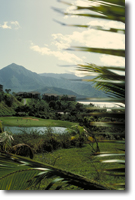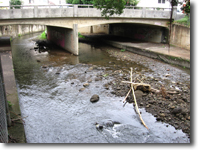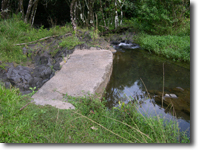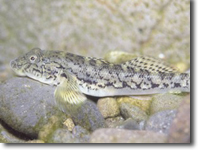Surface Water
 In Hawaii, there are approximately 376 streams that flow continuously throughout the year. These perennial streams are primarily fed by rainfall (surface runoff) and underground sources of water (subsurface flow). From the mountains to the sea, streams give life to the diversity of ecosystems that form our unique Hawaiian landscape. From the lush rainforests mauka to the coastal areas makai, streams flow through conservation zones, agricultural lands, and urbanized areas near the coast.
In Hawaii, there are approximately 376 streams that flow continuously throughout the year. These perennial streams are primarily fed by rainfall (surface runoff) and underground sources of water (subsurface flow). From the mountains to the sea, streams give life to the diversity of ecosystems that form our unique Hawaiian landscape. From the lush rainforests mauka to the coastal areas makai, streams flow through conservation zones, agricultural lands, and urbanized areas near the coast.
Streams are a vital part of our island ecosystem. They provide habitats for native fish and wildlife, support various recreational activities such as swimming and fishing, maintain wetland and estuary ecosystems, and support traditional and customary Hawaiian rights including taro cultivation.
CURRENT STREAMFLOW CONDITIONS
HOW CHANGES TO STREAMS AFFECT YOU
 Stream channel alterations include the widening, straightening, hardening, and other general changes to a stream channel that are permanent in nature. While stream channel alterations are often necessary for public access, health, and safety, the protection and maintenance of instream uses must also be considered.
Stream channel alterations include the widening, straightening, hardening, and other general changes to a stream channel that are permanent in nature. While stream channel alterations are often necessary for public access, health, and safety, the protection and maintenance of instream uses must also be considered.
For example, large concrete flood channels are common sights in Honolulu’s urban areas. During heavy rainstorms, these structures help to alleviate flooding by carrying water quickly from the upper watersheds to the ocean, limiting damage to surrounding areas. However, these channelizations often reduce habitat for fish and wildlife and eliminate recreational stream activities such as fishing and swimming. Other types of alterations include bridges, culverts, dams, and retaining walls.
 Streams are also diverted for many important purposes such as agricultural (vegetables, fruits, flowers, livestock, etc.), domestic (personal use and consumption), and municipal uses (drinking water). Surface water is generally a low-cost source of water when compared to more costly alternatives, such as pumping water from ground water aquifers or paying for water service from a water supply agency such as the Honolulu Board of Water Supply.
Streams are also diverted for many important purposes such as agricultural (vegetables, fruits, flowers, livestock, etc.), domestic (personal use and consumption), and municipal uses (drinking water). Surface water is generally a low-cost source of water when compared to more costly alternatives, such as pumping water from ground water aquifers or paying for water service from a water supply agency such as the Honolulu Board of Water Supply.
Unfortunately, the impacts of diverting water from a stream are similar to those caused by physically altering a stream channel. Reductions in streamflow results in a decreased amount of habitat available for fish and wildlife, increased water temperatures detrimental to stream animals and taro production, limited recreation, and may impact the productivity of corals, fish, and other marine life in nearshore waters.
PROTECTING HAWAII’S UNIQUE STREAM ECOSYSTEMS
 The Stream Protection and Management (SPAM) Branch regulates the State’s surface water resources. One of their primary duties is the permitting of stream channel alterations and diversion of surface waters statewide. Permits allow the Commission to assess the potential impacts of the alteration or diversion on the stream environment. Through these regulations, the Commission strives to ensure the protection and sustainability of Hawaii’s precious freshwater ecosystems.
The Stream Protection and Management (SPAM) Branch regulates the State’s surface water resources. One of their primary duties is the permitting of stream channel alterations and diversion of surface waters statewide. Permits allow the Commission to assess the potential impacts of the alteration or diversion on the stream environment. Through these regulations, the Commission strives to ensure the protection and sustainability of Hawaii’s precious freshwater ecosystems.
Everyone benefits from healthy streams and the educational opportunities they have to offer. Maintaining a balance between changes to stream environments and the protection of instream uses is a challenging task. Continued cooperation between the government, the public, and the private sector is critical to preserving Hawaii’s stream ecosystems for generations to come.

